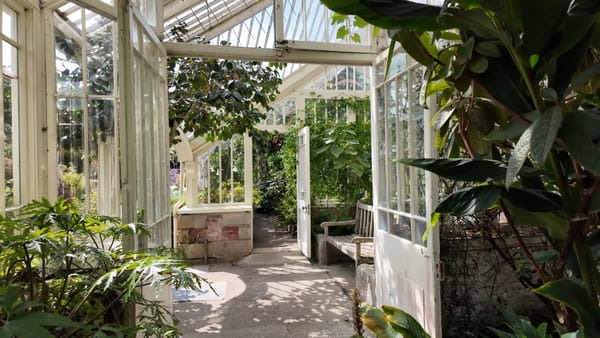In Cornwall’s mild, salt-tinged air, gardens are rarely just for people. Hedges serve as green highways for hedgehogs and birds. Wildflower meadows hum with bees and brimstone butterflies. A small pond can become a thriving refuge for dragonflies, frogs, and swallows on the wing. Creating these habitats is an act of generosity, but when you time your work with the moon’s rhythm, you may give nature an extra helping hand.
Lunar gardening has deep roots in traditional horticulture. The idea is simple: work with the moon’s phases to encourage strong germination, vigorous leafy growth, and healthy root establishment. For wildlife gardening, that means planting and building in ways that support pollinators and other creatures right from the start.
Why Time Habitat Projects with Moon Phases?
Gardeners in Cornwall have long observed the pull of the moon, even if they didn’t always speak of it in scientific terms. The waxing moon (from new to full) is said to draw energy upward, encouraging shoots, leaves, and rapid growth. The waning moon supports root work and consolidation. While modern research on lunar planting is limited, many local allotment groups still report better germination and stronger establishment when working with these cycles.
In a wildlife garden, timing can mean the difference between seeds sprouting in harmony with pollinator needs or missing their peak feeding times. It can also help young plants settle before the season turns.
Wildflower Meadows
Best Timing: Sow wildflower seeds during the waxing moon, ideally in late summer (August 24–31 in 2025). This window combines lunar encouragement with Cornwall’s natural advantages: warm soils, gentle air moisture, and the promise of autumn rains.
Cornish Tip: Early autumn sowing allows species like oxeye daisy, red campion, knapweed, and field scabious to root before winter, providing spring and summer forage for bees, hoverflies, and butterflies.
How to Maximise Success:
- Prepare a lightly raked, weed-free seed bed.
- Broadcast seed on a dry day just before light rain is expected.
- Use native seed mixes suited to your soil type.
For Pollinators: Waxing moon sowing may help flowering times align with local bee and butterfly emergence. Keeping a simple bloom diary can reveal patterns to refine next year’s timing.
Hedge Planting & Habitat Corridors
Best Timing: Plant whips or young shrubs during the late waxing moon or early waning moon (Aug 10–14 or Aug 24–31). These phases encourage both upward and root growth, helping plants settle before storms arrive. Avoid the new moon (Aug 23), when tradition suggests energy is at its lowest.
Cornish Tip: Choose mixed native species—hawthorn, blackthorn, hazel, dog rose, and field maple—to ensure year-round food and shelter.
How to Maximise Success:
- Water well before planting.
- Mulch with seaweed or leaf mould to retain moisture in sandy soils.
- Stagger species so different parts of the hedge flower or fruit in succession.
For Wildlife: Hedges planted at the right time can grow away strongly in their first season, providing early shelter for nesting birds and late berries for migrating species.
Pond Creation & Marginal Planting
Best Timing: Install ponds, add water plants, or sow pond-edge wildflowers during the waxing moon or on the full moon (Aug 9, Aug 24–31). This is especially effective if the pond will fill naturally with autumn rains.
Cornish Tip: Use native aquatic plants like marsh marigold, water mint, and common rush for instant wildlife appeal.
How to Maximise Success:
- Keep roots moist until planted.
- Introduce both submerged oxygenators and marginal plants to create varied habitats.
- Protect young plants from being washed out by early heavy rains.
For Wildlife: Moon-phase timing often coincides with the final warm weeks of summer, giving aquatic plants time to anchor before cooler weather. This helps ponds quickly become havens for insects, amphibians, and birds.
Bulbs and Understory Habitat
Best Timing: For spring pollinator support, plant bulbs in the waxing moon after the autumn equinox. Snowdrops, bluebells, and crocuses will establish before winter, ensuring early nectar in the leanest months.
Cornish Tip: Bluebells thrive in Cornwall’s damp, sheltered hedgebanks—choose native English bluebells rather than hybrids to protect local genetics.
- Adapt to the weather: If a gale coincides with your perfect moon date, wait. Cornwall’s mild climate gives you flexibility.
- Soil care: Add seaweed mulch in waning moons to build structure and feed soil life.
- Keep records: Note the moon phase, date, and weather for each project. Over time, your garden log will reveal your own best lunar timings.
- Share the rhythm: Coordinate with local wildlife groups for community sowings during waxing moons, creating larger connected habitats.
The Wildlife and Pollinator Benefits
- Seed Germination: Waxing moon sowings often give wildflowers a quicker, more even start.
- Habitat Establishment: Hedge and pond projects done in waxing or early waning moons tend to settle faster and resist stress.
- Ecological Synchronisation: Aligning bloom times with pollinator cycles can strengthen local biodiversity.
In Summary:
In Cornwall, pairing lunar gardening with habitat-building blends old tradition with ecological care. Sow wildflowers in late August’s waxing moon, plant hedges before autumn storms, and set ponds to catch the season’s first rains. The moon’s rhythm may be subtle, but it offers a gentle reminder that our gardens, like the tides along Cornwall’s shores, move best when in step with nature’s cycles.









